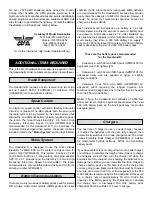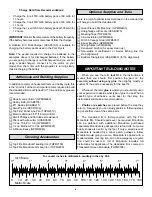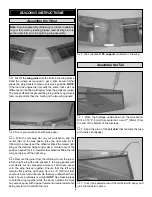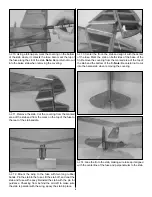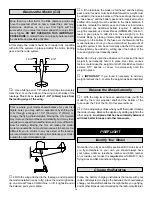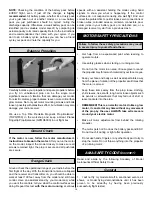
INTRODUCTION ................................................................2
SAFETY PRECAUTIONS ..................................................2
ADDITIONAL ITEMS REQUIRED .....................................3
Radio Equipment................................................................3
Speed Control ....................................................................3
Motor System .....................................................................3
Battery Recommendations .................................................3
Chargers.............................................................................3
Adhesives and Building Supplies .......................................4
Covering Accessories.........................................................4
Optional Supplies and Tools...............................................4
IMPORTANT BUILDING NOTES.......................................4
KIT INSPECTION...............................................................5
ORDERING REPLACEMENT PARTS...............................5
BUILDING INSTRUCTIONS ..............................................6
Assemble the Wing ............................................................6
Assemble the Tail ...............................................................6
Install the Canopy and Main Gear .....................................9
Install the Servos and Pushrods ........................................9
Install the Motor................................................................10
Complete Final Radio Installation ....................................11
GET THE MODEL READY TO FLY..................................11
Check the Control Directions ...........................................11
Set the Control Throws.....................................................11
Balance the Model (C.G.).................................................12
Balance the Model Laterally.............................................12
PREFLIGHT .....................................................................12
Identify Your Model ...........................................................12
Charge the Batteries ........................................................12
Balance Propellers ...........................................................13
Ground Check ..................................................................13
Range Check....................................................................13
MOTOR SAFETY PRECAUTIONS ..................................13
AMA SAFETY CODE ......................................................13
CHECK LIST....................................................................14
FLYING.............................................................................14
Takeoff ..............................................................................15
Flight.................................................................................15
Landing.............................................................................15
The Headwind B is a true park flyer trainer, able to fly in
small areas (but not intended for indoor settings). It is a great
first airplane, with 4-5 minute flight times on the stock motor
package recommended, and climbs mildly with power for
safety. However, please note that no R/C model is intended
to be flown by a brand-new beginner without some
assistance from an experienced pilot.
For the latest technical updates or manual corrections for
the Headwind B, visit the web site listed below and select
the Great Planes Headwind B. If there is new technical
information or changes to this kit, a “tech notice” box will
appear in the upper left corner of the page.
http://www.greatplanes.com/airplanes/index.html
1. Your Headwind B should not be considered a toy, but
rather a sophisticated, working model that functions very
much like a full-size airplane. Because of its performance
capabilities, the Headwind B, if not assembled and operated
correctly, could possibly cause injury to yourself or
spectators and damage to property.
2. You must assemble the model according to the
instructions. Do not alter or modify the model, as doing so
may result in an unsafe or unflyable model. In a few cases
the instructions may differ slightly from the photos. In those
instances the written instructions should be considered
as correct.
3. You must take time to build straight, true and strong.
4. You must use an R/C radio system that is in first-class
condition and a correctly sized motor and components (fuel
tank, wheels, etc.) throughout the building process.
5. You must correctly install all R/C and other components so
that the model operates correctly on the ground and in the air.
6. You must check the operation of the model before every
flight to insure that all equipment is operating and that the
model has remained structurally sound. Be sure to check
clevises or other connectors often and replace them if they
show any signs of wear or fatigue.
7. If you are not already an experienced R/C pilot, you
should fly the model only with the help of a competent,
experienced R/C pilot.
Remember: Take your time and follow the instructions to
end up with a well-built model that is straight and true.
If you have not flown R/C before, we recommend that you
get the assistance of an experienced pilot in your R/C club
for your first flights. If you're not a member of a club, your
local hobby shop has information about clubs in your area
whose membership includes experienced pilots.
In addition to joining an R/C club, we strongly recommend you
join the AMA (Academy of Model Aeronautics). AMA
membership is required to fly at AMA sanctioned clubs. There
We, as the kit manufacturer, provide you with a top quality
kit and instructions, but ultimately the quality and flyability
of your finished model depends on how you build it;
therefore, we cannot in any way guarantee the
performance of your completed model and no
representations are expressed or implied as to the
performance or safety of your completed model.
PROTECT YOUR MODEL, YOURSELF
& OTHERS...FOLLOW THESE
IMPORTANT SAFETY PRECAUTIONS
INTRODUCTION
TABLE OF CONTENTS
2



